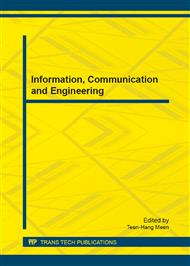p.255
p.261
p.269
p.275
p.281
p.286
p.293
p.299
p.305
Design and Implementation of Automotive Shock Absorber Performance Test
Abstract:
In Taiwan, the motor and autobike industry have a considerable extent to promote the manufacture of shock absorber tests. As it is known, using a software and equipment to process the information about the operation of a corresponding damper is necessary. In order to promote the shock absorber damping tester, to develop the Labview based shock absorber testing machine provides functions such as the hardware test, setup parameters, the measurements for test elements, the testing results display and historical consults. There are some researching steps are involved by making out the major operations and testing functions to construct the shock absorber tester and so on. The expected purpose will be attained by both training the relative process technology and getting the future development in absorber testing know-how by native manufacturers in Asian area, instead of imported machines from Japan or America.
Info:
Periodical:
Pages:
281-285
Citation:
Online since:
February 2013
Authors:
Keywords:
Price:
Сopyright:
© 2013 Trans Tech Publications Ltd. All Rights Reserved
Share:
Citation:


